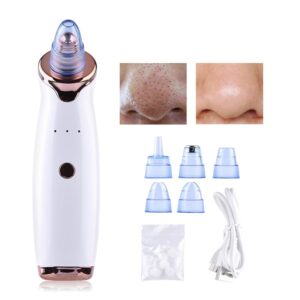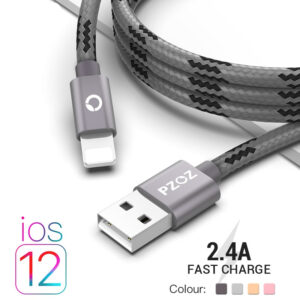Delivery Method: Via Email Product: Drugs Recipient:
Recipient Name
Shirly Gutshtat, CEO
Recipient Title
Keren Elisar, Founder & President
K & Care Organics
Simtat Hadayagim 2 St
Mikhmoret 4029700
Israel
info@kcare.co.il Issuing Office: Center for Drug Evaluation and Research (CDER)
United States
WARNING LETTER
August 6, 2025
RE: 711000
Dear Ms. Gutshtat and Ms. Elisar:
This letter is to advise you that on May 14th, 2025 the U.S. Food and Drug Administration (FDA) reviewed your product labeling, including your website https://www.botaobaby.com/, for your “BOTAÓ GROW NATURALLY Kids Mineral Foam Spray” (hereinafter “BOTAÓ Kids Mineral Foam Spray”), “BOTAÓ GROW NATURALLY Baby Mineral Foam Spray” (hereinafter “BOTAÓ Baby Mineral Foam Spray”), and “SUN & SHINE SPF 50+ BROAD SPECTRUM Mineral Sunscreen Mousse,” (hereinafter “SUN & SHINE Sunscreen Mousse”) sunscreen drug products, which are available for purchase in the United States without a prescription.
Your “BOTAÓ Kids Mineral Foam Spray,” “BOTAÓ Baby Mineral Foam Spray,” and “SUN & SHINE Sunscreen Mousse” are “drugs” as defined by section 201(g)(1)(B) of the FD&C Act, 21 U.S.C. 321(g)(1)(B), because they are intended for use in the diagnosis, cure, mitigation, treatment, or prevention of disease, and/or under section 201(g)(1)(C) of the FD&C Act, 21 U.S.C. 321(g)(1)(C), because they are intended to affect the structure or any function of the body.
Examples from the products’ labeling, including the most recent labeling submitted to FDA as part of drug listing pursuant to 21 CFR part 207, that provide evidence of the intended uses (as defined in 21 CFR 201.128) of the products as drugs include, but may not be limited to, the following:
“BOTAÓ Kids Mineral Foam Spray”
“Uses ∙ helps prevent sunburn…” [from your product label]
“BOTAO Mineral Sunscreen Foam Spray SPF 50+ for Kids, blends Zinc Oxide, a natural mineral filter for broad spectrum protection…” [from your product label]
“Contains Zinc Oxide, 100% natural mineral filter known to be safe for use on kids. Providing high protection from harmful UVA and UVB rays, BOTAO sunscreen Foam is gentle on the skin and easily absorbed…” [from your product website]
“BOTAÓ Baby Mineral Foam Spray”
“Uses ∙ helps prevent sunburn…” [from your product label]
“BOTAO Mineral Sunscreen Foam for Babies Broad Spectrum SPF 50+, contains Zinc Oxide, a natural mineral filter known to be safe for use on babies…” [from your product label]
“Contains Zinc Oxide, 100% natural mineral filter known to be safe for use on babies. Providing high protection from harmful UVA and UVB rays, BOTAO sunscreen is gentle on the skin and easily absorbed.” [from your product website]
“SUN & SHINE Sunscreen Mousse”
“Uses ∙ helps prevent sunburn…” [from your product label]
“Mineral Sunscreen Mousse Broad Spectrum SPF50+ Sunscreen For Face and Body” [from your product label]
Based on the above labeling, your “BOTAÓ Kids Mineral Foam Spray,” “BOTAÓ Baby Mineral Foam Spray,” and “SUN & SHINE Sunscreen Mousse” are intended for use as over-the-counter (OTC) sunscreen drug products. No FDA-approved applications pursuant to section 505 of the FD&C Act, 21 U.S.C. 355, are in effect for your drug products. Section 505G of the FD&C Act, 21 U.S.C. 355h, governs the marketing of nonprescription drugs that are marketed without an approved application under section 505 of the FD&C Act, 21 U.S.C. 355, such as your products. Under section 502(ee) of the FD&C Act, 21 U.S.C. 352(ee), a nonprescription drug is misbranded if the drug is subject to section 505G of the FD&C Act, but does not comply with the requirements for marketing under that section and is not the subject of an application approved under section 505 of the FD&C Act, 21 U.S.C. 355.
Section 505G of the FD&C Act, 21 U.S.C. 355h, provides that certain nonprescription drugs are deemed to be generally recognized as safe and effective (GRASE) and not new drugs if they, among other things, conform to the conditions in the applicable OTC monograph. In the case of OTC sunscreen drug products, the applicable OTC monograph is set forth in the final administrative order, OTC000006: Over-the-Counter Monograph M020: Sunscreen Drug Products for Over-the-Counter Human Use (hereinafter M020), which was deemed a final order by 505G(b)(8) and 505G(k)(2)(B).1 However, under section 505G(m)(2), “notwithstanding subsection [505G](a),” sunscreens in dosage forms other than oil, lotion, cream, gel, butter, paste, ointment, stick, spray, and powder may only be lawfully marketed, without an application approved under section 505 of the FD&C Act, pursuant to an order issued under section 505G of the FD&C Act.2 To date, no final order has been issued by the Secretary under 505G(b) or 505G(c) that would authorize marketing sunscreen in a foam (aka mousse) dosage form3. As previously stated, there are no FDA-approved applications in effect for your drug products.
Thus, even if your products were in conformity with the conditions set forth in M020 and all other applicable requirements to be deemed GRASE and not new drugs under section 505G(a)(1), they do not comply with the requirements under section 505G. Accordingly, “BOTAÓ Kids Mineral Foam Spray,” “BOTAÓ Baby Mineral Foam Spray,” and “SUN & SHINE Sunscreen Mousse” are misbranded under section 502(ee) of the FD&C Act, 21 U.S.C. 352(ee).
The introduction or delivery for introduction of misbranded drugs into interstate commerce violates section 301(a) of the FD&C Act, 21 U.S.C. 331(a).
Conclusion
The violations cited in this letter are not intended to be an all-inclusive list of violations that may exist in connection with your products. You are responsible for investigating and determining the causes of any violations and for preventing their recurrence or the occurrence of other violations. It is your responsibility to ensure that your firm complies with all requirements of federal law, including FDA regulations.
This letter notifies you of our concerns and provides you an opportunity to address them. Failure to adequately address this matter may result in legal action including, without limitation, seizure, and injunction.
Please notify FDA in writing, within 15 working days of receipt of this letter, of the specific steps you have taken to correct any violations. Include an explanation of each step being taken to prevent the recurrence of violations, as well as copies of related documentation. If you believe that your products are not in violation of the FD&C Act, include your reasoning and any supporting information for our consideration. If you cannot complete corrective action within 15 working days, state the reason for the delay and the time within which you will complete the correction. Your response should be sent to U.S. Food and Drug Administration, CDER/OC/Office of Unapproved Drugs and Labeling Compliance by email to FDAAdvisory@fda.hhs.gov and include your firm name and the unique identifier “711000” in the subject line of your email.
Sincerely,
/S/
Tina Smith, M.S.
Captain, U.S. Public Health Service
Director
Office of Unapproved Drugs and Labeling Compliance
Office of Compliance
Center for Drug Evaluation and Research
U.S. Food and Drug Administration
_______________________
1 See sections 505G(a)(1) and (2) of the FD&C Act and see Order ID OTC000006, available at FDA’s website OTC Monographs@FDA, https://dps.fda.gov/omuf. As required by section 505G(a)(2), M020 encompasses the requirements specified in part 352 of title 21, Code of Federal Regulations, as published on May 21, 1999, beginning on page 27687 of volume 64 of the Federal Register, except that the applicable requirements governing effectiveness and labeling shall be those specified in section 201.327 of title 21, Code of Federal Regulations.
2 Section 505G(m)(2) provides that “[n]otwithstanding subsection [505G](a),” a drug that, “prior to the date of the enactment of this section [March 27, 2020], the Secretary determined in a proposed or final rule to be ineligible for review under the OTC drug review” (emphasis added) may not be legally marketed without an approved NDA or ANDA except as “pursuant to an order issued under this section”. In a 2019 proposed rule, FDA determined that sunscreens in all dosage forms other than oil, lotion, cream, gel, butter, paste, ointment, stick, spray, and powder were ineligible for review under the OTC Drug Review under the then-operative requirements because we did not receive data showing that they were marketed prior to 1972. 84 FR 6204 at 6229-6230 (Feb. 26, 2019); see also 84 FR 6204 at 6206 and 6272. Therefore, under section 505G(m)(2) of the FD&C Act, a sunscreen in any dosage form other than the ten dosage forms listed above may only be marketed with an approved application, unless FDA determines otherwise in an order issued under section 505G of the FD&C Act. To date, no final order has been issued by the Secretary under 505G(b) or 505G(c) that would authorize marketing of sunscreen in a foam (aka mousse) dosage form.
3 The principal display panels of your product labels, as well as other materials, use the terms “foam spray,” “foam,” and/or “mousse” to describe each of your products that are the subject of this letter. “Foam” is the dosage form term in United States Pharmacopeia (USP) general chapter <1151>, Pharmaceutical Dosage Forms, that best corresponds to your products; “mousse” is not used in that reference. Additionally, USP <1151> defines “foam” and “spray” as two distinct dosage forms. Images, video, and text regarding your products confirm that each of the products addressed in this letter meets USP’s definition of “foam”—i.e., each appears as a dispersion of gas in a liquid or solid continuous phase wherein the liquid or solid contains the drug substance and suitable excipients.






